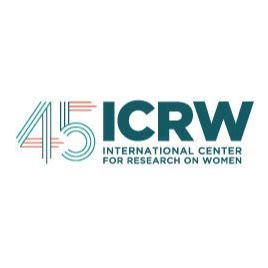Approved by curator

Added: Sep 17, 2021
Last edited: Jan 23, 2024
Empowering Female Workers in the Apparel Industry is a report prepared by the BSR containing in-depth research conducted by the International Centre for Research on Women (ICRW) for the apparel sector. Three key areas have been devised where apparel companies should "invest to drive improvements in outcomes for women workers and promote women’s economic empowerment around the world".
(The analysis and the underlying research conducted by ICRW were supported by C&A Foundation and the Levi Strauss Foundation).
Despite a substantial increase in the attention to women’s contributions and challenges within the apparel sector over the past decade, women, particularly those further down the supply chain, are still severely affected by issues of inequality within the industry.
By addressing the need for economic empowerment for women, highlighting the existing levels of gender-based harassment and violence within the workplace, and supporting women take on the disproportionate amount of unpaid childcare, this report ‘strongly encourages collaboration across the whole value chain and beyond in order to tackle root causes and help improvements take hold for the long term’.
The three key areas devised to address the empowerment of female workers in the apparel industry are as follows:
1. Address Informality
Informal workers—the overwhelming majority of whom are women—face some of the greatest risks and miss out on the benefits that accompany formal employment. With estimates of informality in the garment value chain ranging from 50 percent to 80 percent,14 this is a relevant issue for all actors in the sector.
2. Go Further to End Violence
According to the literature and the interviews conducted as part of this research, violence remains prevalent in the workplace, in transit to and from work, and in public spaces affecting many women in the apparel sector. In some regions, restrictive norms about masculinity have led to a habituation of the experience of violence and high levels of tolerance for sexual harassment and intimidation.
3. Join Global Efforts to Recognise Childcare Needs
A good starting point to support women to enter and remain in the workforce is to offer secure, viable, high- quality childcare options. 22 Apparel sector companies can play a significant role in increasing the availability and quality of childcare options, which, in turn, can have significant positive outcomes for women workers.
The apparel sector has made significant changes in addressing the gender-based inequalities still faced by women workers. However, 'now it is time to deepen and expand that work to better address the specific needs of women workers in the global value chain in collaboration with suppliers, NGOs, international development agencies, and governments'.
A job in the apparel sector could be the first formal employment opportunity for many women in developing countries—an essential step toward financial independence and the start of a path out of poverty. At the same time, poor working conditions and incidents of labor rights violations within apparel factories are well documented. Apparel companies have invested a great deal to support workers around the world, and while there is much still to be done, these programs are making meaningful improvements and providing insights that can be applied to make these efforts even more effective. However, the global apparel sector is challenging, complex, and changing rapidly. The programs of the past may not be as effective today and should adapt to address the changing face of the apparel workforce and workplace.
Photo by Allan Wadsworth on Unsplash





